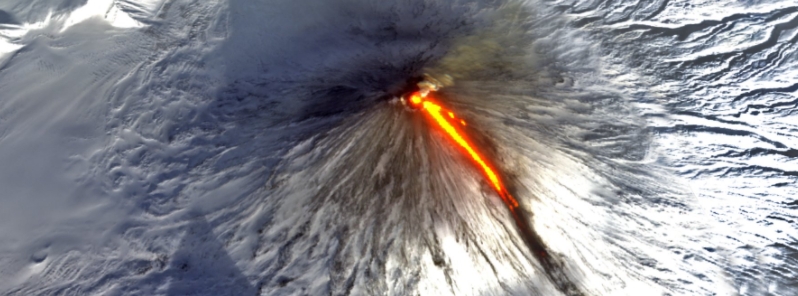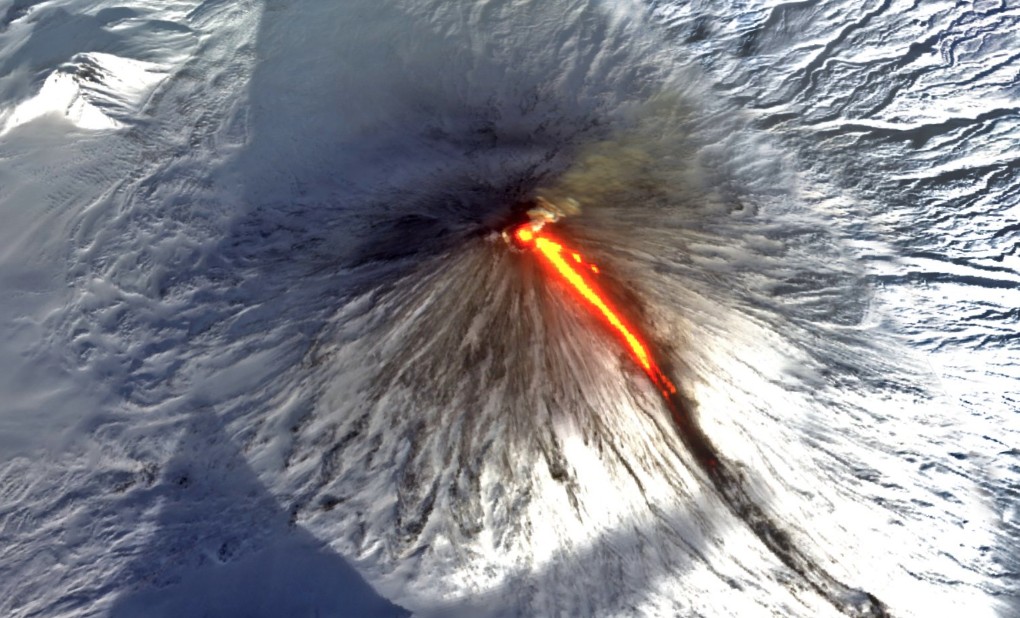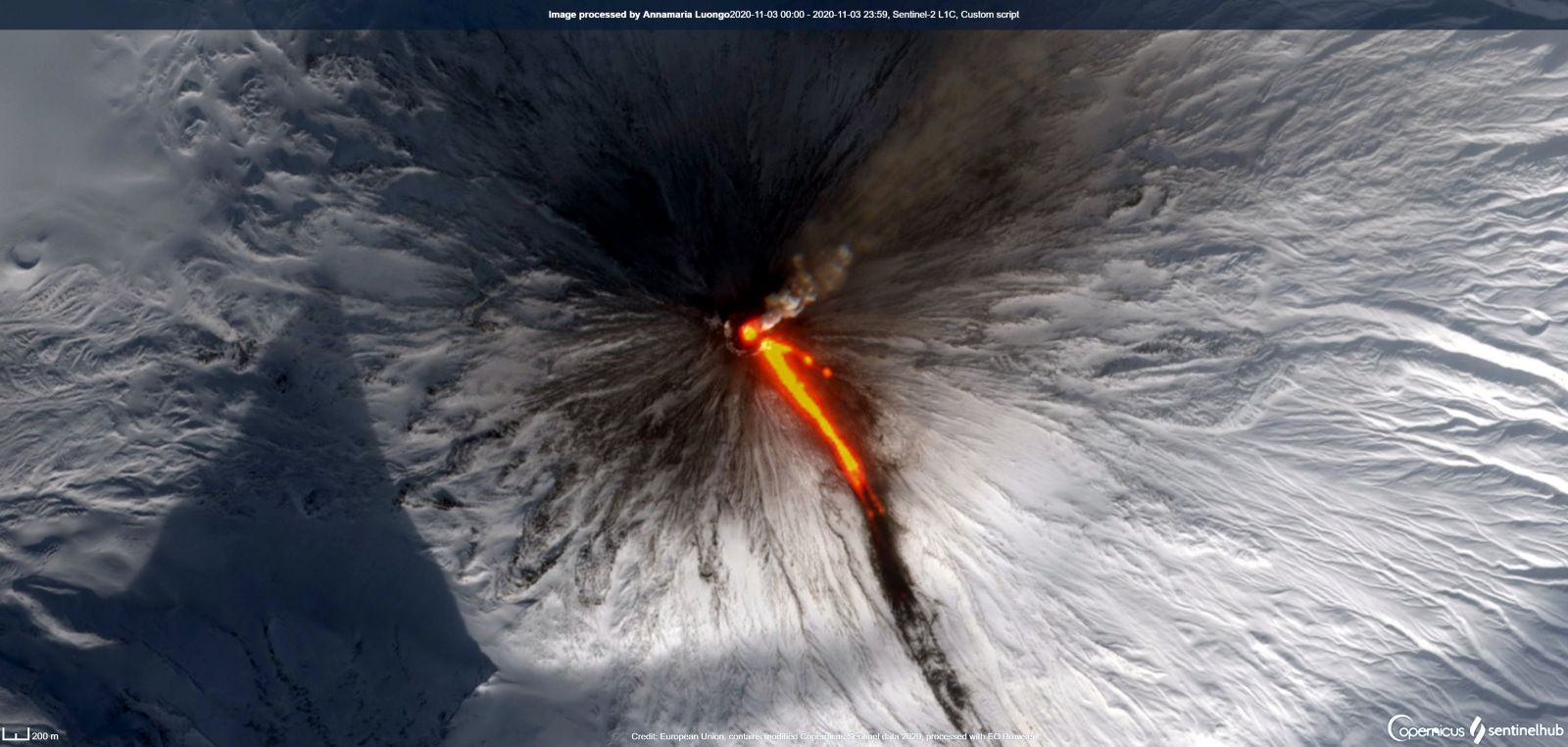Moderate explosive-effusive eruption continues at Klyuchevskoy volcano, Russia

A moderate explosive-effusive eruption continues at Russia's Klyuchevskoy volcano, according to a bulletin issued by the Kamchatka Volcanic Eruption Response Team (KVERT) on November 4, 2020. Strombolian and gas-steam with some ash activity were also observed.
KVERT noted that a lava flow continues to effuse on the southeast flank along the Apakhonchich chute. Satellite data also showed a large bright thermal anomaly in an area of the volcano.
In a bulletin on November 3, the response team reported that some amount of ash activity and gas-steam were observed.
A large bright thermal anomaly in an area of the volcano was observed on November 2.
The Aviation Color Code remains at Orange. Other volcanoes in Kamchatka with Orange Aviation Color Code are Karymsky and Sheveluch.

Klyuchevskoy volcano on November 3. Image credit: Copernicus ESA/Sentinel-2, Antonio Vecoli
#volcan #volcano #Klyuchevskoy La coulée n'est pas seule:l'activité explosive sommitale reste soutenue (quasiment un dynamisme de fontaine de lave)/The lava flows is not the only thing important:explosive activity remains sustained at the summit (nearly lava fountaining dynamics) pic.twitter.com/HcfeNc3j3U
— CultureVolcan (@CultureVolcan) November 5, 2020
#klyuchevskoy #Volcano from space. Don't blink or you'll miss the dark hot spot upper center of this NOAA satellite loop from NESDIS, https://t.co/vhoErmjbBu pic.twitter.com/hYhlB5vVDj
— NWS CWSU Oakland (@NWSCWSUZOA) November 4, 2020
#KLYUCHEVSKOY, Volcano Kamchatka, 02.11.2020 pic.twitter.com/aVrDNhkMDO
— Rita Bauer (@wischweg) November 2, 2020
Last month, new lava effusion was observed along the Apakhonchich chute. Eruptions sent ash up to 300 to 400 m (980 to 1 300 feet) above the crater, while a gas-steam plume containing some ash descended along the slope of the volcano towards the east.
The Aviation Color Code was raised from Green to Yellow on October 2 and from Yellow to Orange on October 7.

Image credit: Copernicus ESA/Sentinel-2, Anamaria Luongo
Geological summary
Klyuchevskoy (also spelled Kliuchevskoi) is Kamchatka's highest and most active volcano. Since its origin about 6 000 years ago, the beautifully symmetrical, 4 835-m-high (15 862 feet) basaltic stratovolcano has produced frequent moderate-volume explosive and effusive eruptions without major periods of inactivity. It rises above a saddle NE of sharp-peaked Kamen volcano and lies SE of the broad Ushkovsky massif.
More than 100 flank eruptions have occurred during the past roughly 3 000 years, with most lateral craters and cones occurring along radial fissures between the unconfined NE-to-SE flanks of the conical volcano between 500 m and 3 600 m (1 640 – 11 811 feet) elevation.
The morphology of the 700-m-wide (2 296 feet) summit crater has been frequently modified by historical eruptions, which have been recorded since the late-17th century. Historical eruptions have originated primarily from the summit crater, but have also included numerous major explosive and effusive eruptions from flank craters. (GVP)
Featured image credit: Copernicus ESA/Sentinel-2, Antonio Vecoli

Commenting rules and guidelines
We value the thoughts and opinions of our readers and welcome healthy discussions on our website. In order to maintain a respectful and positive community, we ask that all commenters follow these rules.